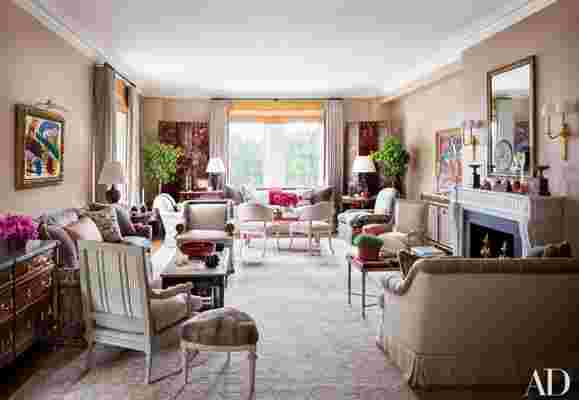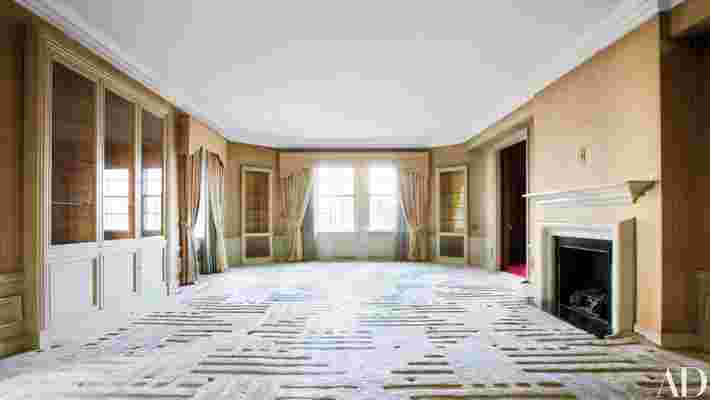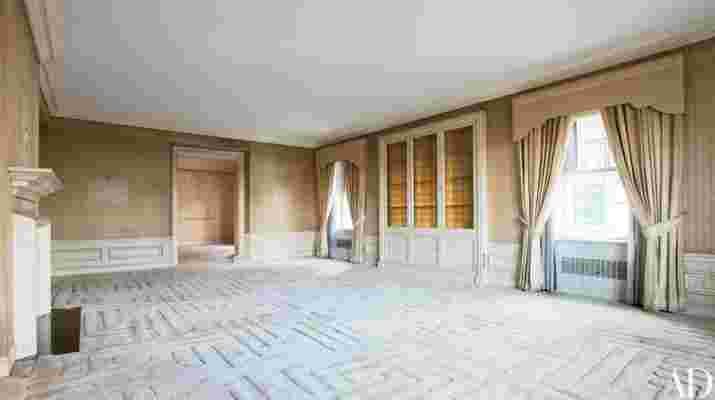This article originally appeared in the November 2013 issue of Architectural Digest.
Among the perils of buying a prewar New York apartment are the ravages wrought by previous generations of ambitious owners, who have ripped out original moldings or installed newfangled—but rapidly obsolete—features to keep in step with changing fashions.
“Often there have been so many unfortunate renovations that it’s like peeling an onion,” says Manhattan designer Alexa Hampton. So when she and one of her clients, a Brazilian businesswoman, first visited a generously proportioned seven-room apartment at the Pierre hotel on Fifth Avenue, they were pleasantly surprised to discover that most of the interiors hadn’t been touched for nearly half a century.
The faded decor—an amalgam of postwar formal and groovy, with Austin Powers–style zigzag fabrics, a psychedelic mirrored bathroom, and thick-pile cut-design carpets—had remained intact since the late 1960s. “It was very dated, but there was wonderful potential,” Hampton says.
The client intended to use the apartment as a pied-à-terre and wanted it to function like a hotel suite in terms of comfort and convenience, but she also wanted it to feel very much like a home. She vetted every detail in advance and specified that she wished to avoid making unnecessary changes. “My client was very organized and impressive,” Hampton says, “and she was determined not to dillydally.”
They agreed that the entry hall, the most trafficked space in the apartment, seemed overly grandiose with its ornate inlaid-marble floor and dark-wood paneling. At Hampton’s suggestion, the paneling was removed in favor of coffee-tone walls, and low wainscoting was added to accentuate the high ceiling.



The marble floor, one of the only smooth surfaces amid a sea of dense carpeting, was also jettisoned. In its place, Hampton advocated parquet de Versailles, and she replaced several of the carpets throughout the public rooms with a complementary herringbone parquet to create a sense of continuity. “A big shift in flooring materials can be jarring in a small space,” she notes.
From the entry hall, a recessed area led to a charm-free corridor to the bedrooms. Working with her contractor, the construction firm S. Donadic, Hampton partitioned off each end of the hallway with new doorways, creating private vestibules for the bedroom areas and introducing a sense of rhythm and symmetry.
The apartment’s layout was actually quite harmonious, so only a few structural changes were deemed necessary. To remake the gloomy formal library into a cheerful guest room, the team painted it blue, dismantled a window-obscuring arch to let in more daylight, and walled over a door to the living room to offer visitors greater privacy. It seemed logical, meanwhile, to recast the library’s wet bar as a bath. But when Hampton was denied the building permits, she came up with a different idea: She put in a jib door leading to the front-hall bath and turned the bar into a closet.

Leave a Reply